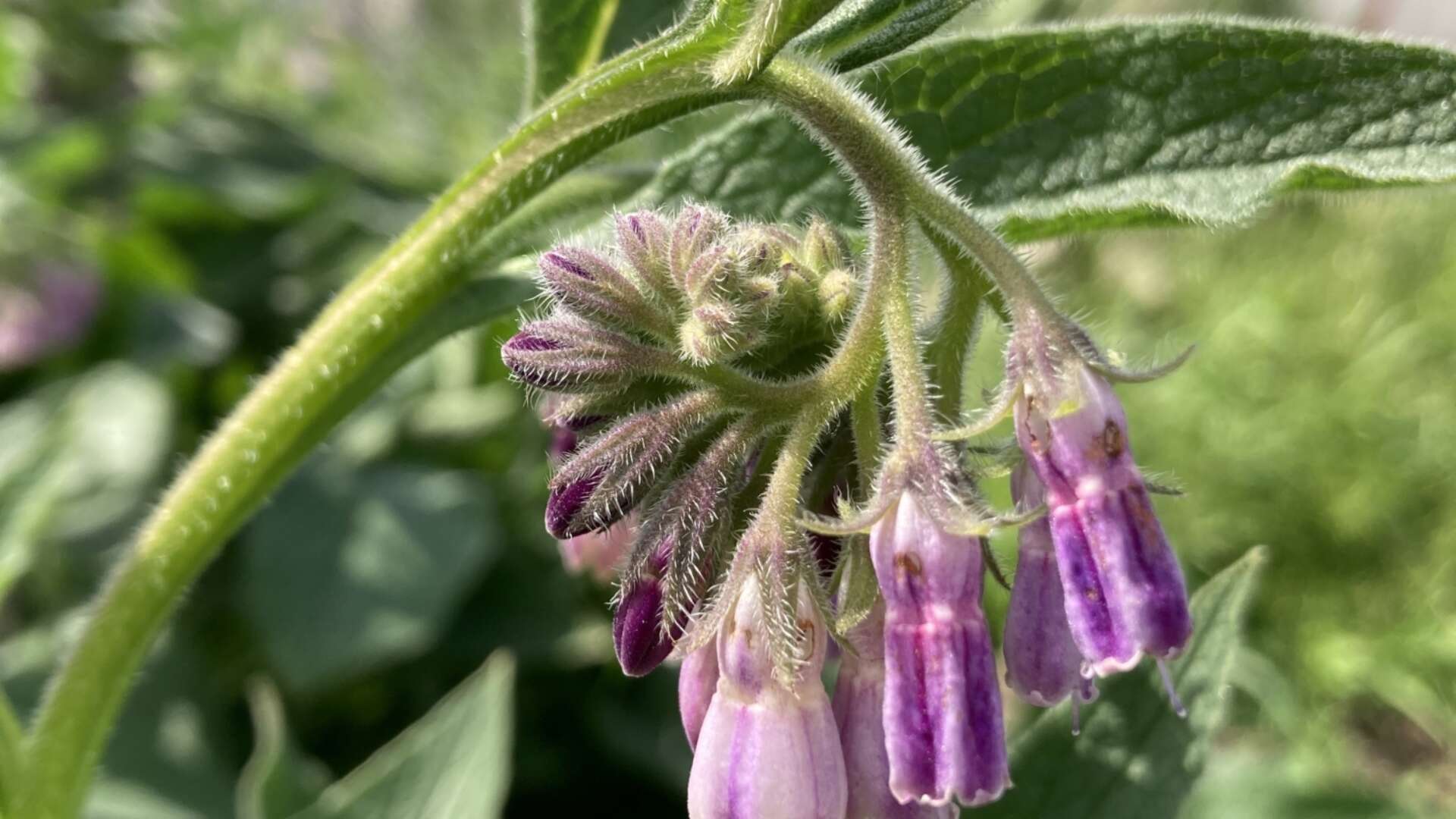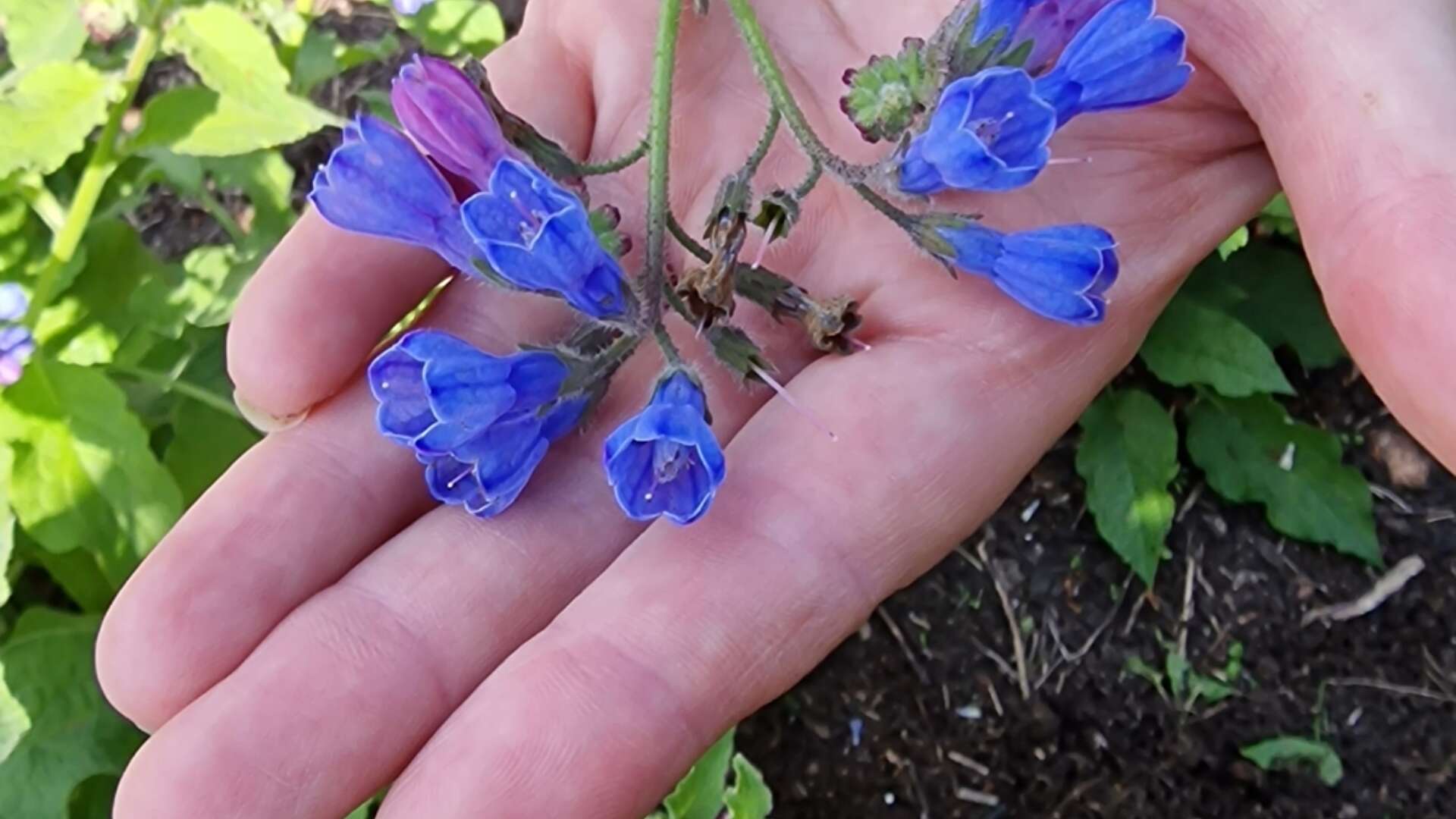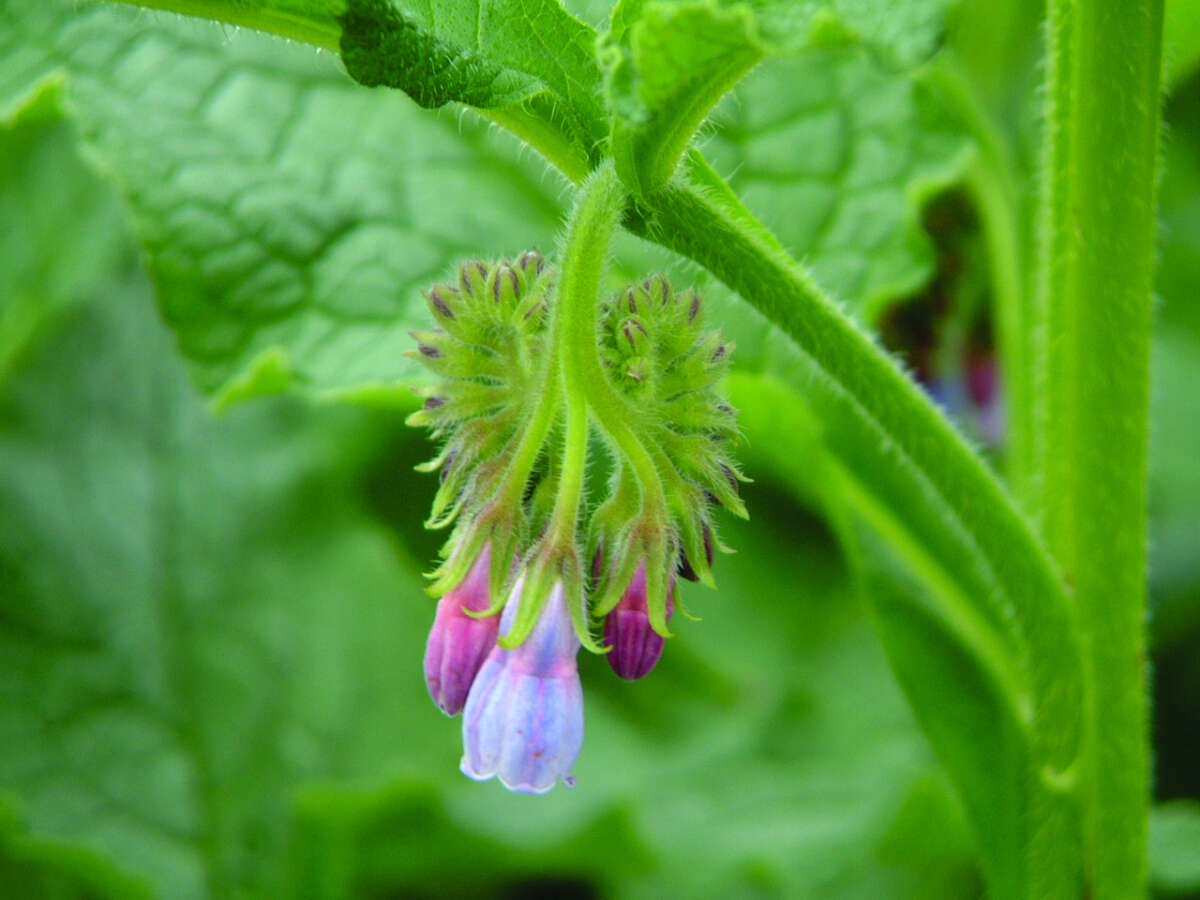Soil
Comfrey

Comfrey is the plant that kick-started Garden Organic when Henry Doubleday promoted it as a food and forage crop in the late 19th century.
Later our founder and keen organic grower Lawrence Hills continued the comfrey crusade as part of the Henry Doubleday Research Association and began experimenting with the herb as a natural fertiliser.
His experiments took place in the village of Bocking, near Braintree, and many of his trials were named after the village - with Bocking 14 comfrey eventually identified as one of the most nutritious varieties and least likely to self-seed.
Now many gardeners benefit from these experiments, using comfrey as a nutritious liquid plant feed that can be made for free at home.
Why grow it?
Common comfrey (Symphytum officinale) has long been used as a medicinal plant - but it's the high levels of nitrogen, phosphorus and potassium, contained in the leaves, that are so coveted by gardeners. There are 35 types of comfrey in total, and we grow 29 comfrey varieties at Garden Organic.
These nutrients (also known as NPK) are needed by growing plants to help them establish healthy roots and fruits. Nitrogen boosts leafy growth, phosphorus promotes root development and potassium helps flowers and fruits to form.
Comfrey flowers, which appear from late May, are also very attractive to bees and hoverflies, which are essential for pollination of many food crops. They also encourage predatory insects that can help keep 'pests' at bay.
The plant has deep tap roots, which can draw up nutrients from the soil, so it helps break up tough soil, makes an effective mulch, and is a good ground cover.
Best of all, comfrey leaves make a brilliant liquid plant feed - so you never need to spend money on a shop-bought bottle again!

How to grow comfrey
- Garden comfrey has a higher nutrient content than the common wild comfrey, and its leaves can be cut several times in a season. Our research found that the ‘Bocking 14’ variety is the best.
- When planting comfrey, choose your site carefully – comfrey can live for 20 or more years. It's too vigorous to grow in a pot, but it will grow on most soil types (except the very shallow and chalky), thriving in good soil in the full sun.
- Allow 60–90 cm between plants.
- Once established, it needs very little maintenance, however, to maximise your comfrey crop, extra feeding with manure and compost or grass clippings will all help to produce more leaves.
- If you plant cuttings in spring you will be getting your first leaf harvest before the end of the growing season.
- Remove flowering stems in the first season to gain maximum leaf growth next year.
- Propagating comfrey is easy, and can be done from root cuttings or by division.
How to make organic comfrey liquid fertiliser
Follow these simple steps:
- Cut off the leaves about 5cms above soil level. Wear gloves, as the stems are covered in stiff hairs that can irritate the skin.
- Fill a bucket or barrel with water and add approximately 1kg of cut or bruised leaves to every 15litres of water. You needn’t be too precise!
- Press the leaves down firmly so they are covered with water, and cover the container.
- After 4-6 weeks a noxious (very) smelly brown liquid is ready for use. There is no need to dilute.
- Strain off the sludge at the bottom, and put it on the compost heap.
To make a concentrate, you don’t need water:
You will need:
- 2-litre plastic drinks bottle, without a cap.
- a collecting vessel – large yoghurt pot, ice cream carton or similar.
To make:
- Turn the bottle upside down and cut off the bottom.
- Pack in the cut and bruised comfrey leaves so the bottle is full. Press them down firmly.
- Cover the open end with a polythene bag, held in place with an elastic band, to prevent drying out.
- Stand/fix/wedge the bottle upside down so that it will drip into your collecting vessel.
- As the leaves rot, a brown comfrey liquid will drip out of the bottle into the collecting vessel below.
- Add fresh cut/bruised leaves, pressed down firmly, into the bottle, to keep a constant supply of rotting material
- This concentrate should be watered down according to its strength – when thick and black, dilute 1-part feed to 20-parts water; when thin and brown, dilute 1-to-10. You needn’t be too precise.
How to use your comfrey liquid fertiliser:
- Use as a summer feed for tomatoes, peppers and cucumbers (apply as soon as the flowers have set fruit).
- For hanging baskets and pot plants.
- For other hungry flowering plants such as clematis and dahlias.
Make your own comfrey feed with Emma 🔗
Learn more about making comfrey liquid plant food with our Head Gardener Emma's tutorial...

Other ways to use comfrey leaves
- Place cut or bruised comfrey leaves in alternate layers throughout your compost heap. Their decomposition will encourage bacterial action causing the heap to heat up and speed up the composting process.
- Use as a mulch. Chop up comfrey leaves with grass cuttings, and place a 5cm layer on the surface of the soil around all plants. This will slowly rot down to provide nutrients and act as a mulch to keep in moisture and help control weeds.
- Add fresh cut leaves to your leafmould heap. Their nutrient-rich liquid will be absorbed, making it a perfect medium for growing seeds and potting compost.
- Fertilise the bottom of your potato and runner bean trenches with a layer of comfrey leaves. As they break down, the plant roots will access the potassium-rich fertiliser.

Join Garden Organic!
By becoming a Garden Organic member you can join thousands of people who are already leading the movement for an organic and sustainable future for us all. And get great member benefits!
Join today